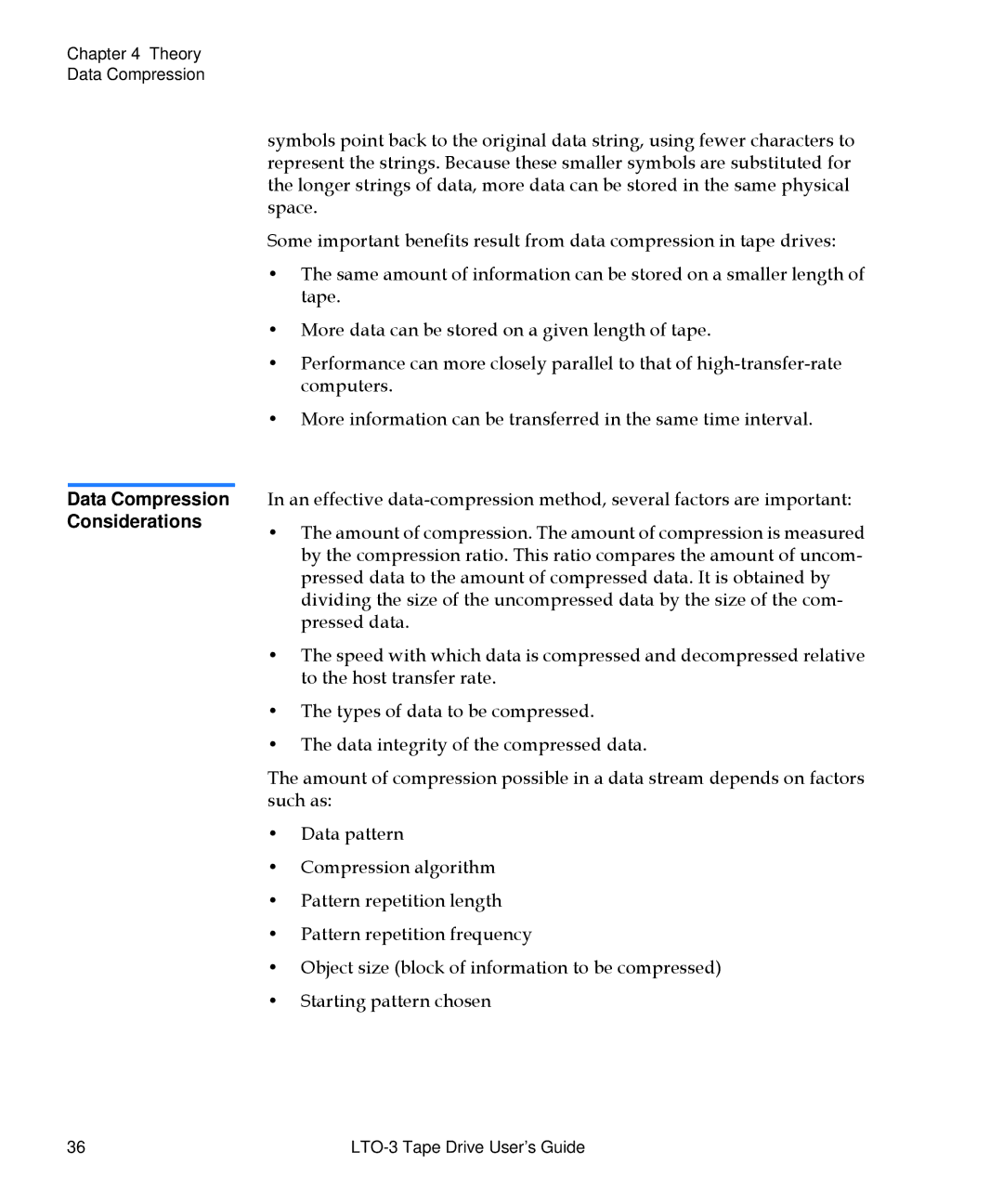Chapter 4 Theory Data Compression
Data Compression Considerations
symbols point back to the original data string, using fewer characters to represent the strings. Because these smaller symbols are substituted for the longer strings of data, more data can be stored in the same physical space.
Some important benefits result from data compression in tape drives:
•The same amount of information can be stored on a smaller length of tape.
•More data can be stored on a given length of tape.
•Performance can more closely parallel to that of
•More information can be transferred in the same time interval.
In an effective
•The amount of compression. The amount of compression is measured by the compression ratio. This ratio compares the amount of uncom- pressed data to the amount of compressed data. It is obtained by dividing the size of the uncompressed data by the size of the com- pressed data.
•The speed with which data is compressed and decompressed relative to the host transfer rate.
•The types of data to be compressed.
•The data integrity of the compressed data.
The amount of compression possible in a data stream depends on factors such as:
•Data pattern
•Compression algorithm
•Pattern repetition length
•Pattern repetition frequency
•Object size (block of information to be compressed)
•Starting pattern chosen
36 |
|
